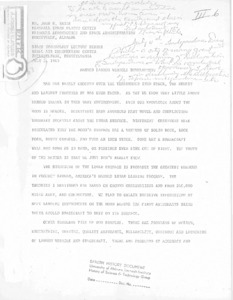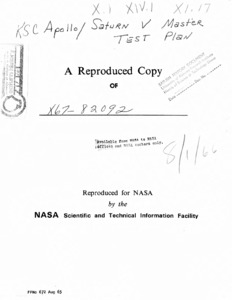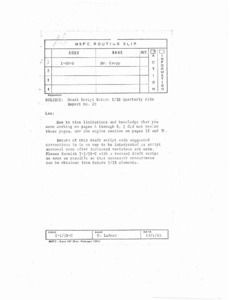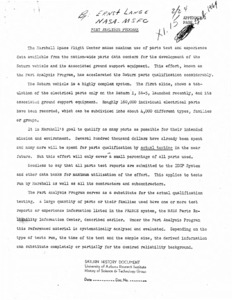
Browse Items (7 total)
Sort by:
-
"Manned Launch Vehicle Development."
Includes handwritten notes. Includes references to slides. Essay remarking on how space vehicles will interact on the moon's surface. -
"Organization of a countdown"
The Organization of a Countdown was developed over 8 years of missiles and space systems testing at the Douglas Aircraft Company, Sacramento test Center. The experience on which this study was based includes the Thor development and acceptance testing, Titan I second stage engine development testing, Development of liquid hydrogen handling techniques, Saturn S-IV and S-IVB development and acceptance testing. The intent of this paper is to examine the static test countdown organization and discuss the need for a systematic method to organize a countdown. -
"KSC Apollo/Saturn V Master Test Plan."
The John F. Kennedy Space Center (KSC) Apollo/Saturn V Development/Operations Plan, K-PM-0, establislies the requirement for an Apollo/Saturn V Master Test Plan (MBP). This document, prepared by the Saturn Systems Office. -
"Draft script Saturn I/IB quarterly film report no. 25."
MSFC routing slip to Mr. Lee Cropp concerning the draft copy. Contains hand-written editing suggestions, as well as a note that even if these suggestions are applied, that does not imply approval of the script for use. Covers July, August and September, 1965. -
"Part analysis program."
Includes carbon copy of letter sent to David L. Christensen from Ernst Lange regarding the Part Analysis program. -
"A comparison of four control systems proposed for Saturn V launch vehicles."
Presented are the results of a study comparing four proposed control systems for the first stage flight of Saturn V launch vehicles. The primary basis of comparison is the effect on structural loads, using the bending moments at three stations as load indicators. Two of the systems sense only the vehicle attitude and attitude rate, while the other two systems also sense the lateral acceleration. A yaw plane wind response analysis, including rigid body translation, rigid body rotation, four bending modes, five slosh modes, and a non ideal control system, was performed. The winds used in the study were the Marshall synthetic profile and three selected Jimsphere-measured real wind profiles. Load relief obtained from the addition of accelerometer feedback in the control loop amounted to about 10 percent at maximum bending moment station. In view of predicted structural capabilities of the vehicle, this reduction in loads was not considered sufficient to offset the added complexity and the slight reduction in rigid body stability . -
"Saturn I/IB quarterly film report no. 24, April, May and June, 1965."
A list of film reports covering the months of April, May and June of the year 1965.






